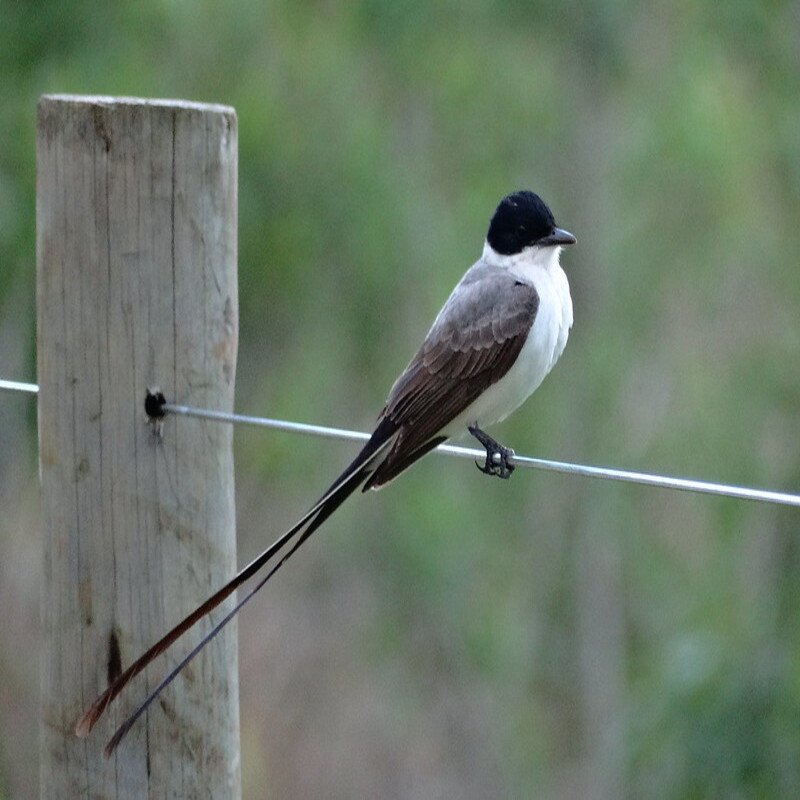The fork-tailed flycatcher,Tyrannus savana is a passerine bird in the tyrant flycatcher family. It is a member of the genus kingbirds. Fork-tailed flycatchers are named for their distinctively long forked tail. They are found in sparsely wooded or grassland habitats stretching from southern Mexico to Argentina. They are frequently observed resting on prominent perches, waiting for flying arthropods to fly by. They then sally out, consume their prey, and return to their perch.
Quick Overview: Tyrannus Savana – Fork-Tailed Flycatcher
Body size: Around 14.5 in (37 cm) and a weight of 28 g (1 oz)
Main colors: Gray, Black, Yellow
Range: Throughout the United States
Migratory Bird: Yes
Best time of the year to see in the U.S.: All Year (January – December)
Conservation Status: Least Concern
Fork-tailed Flycatcher Description
The Fork-tailed Squirrel Flycatcher’s mantle is light gray, and its crown is black with a partially veiled yellow crown patch. It has a forked tail and long tail streamers; the male’s tail streamers are longer.

Size
These birds have a length of 14.5 in (37 cm) and a weight of 28 g (1 oz). Their wings could range from 15 in (38 cm).
Feeding
Although this species is primarily an insectivore, it will switch to berries and small fruits during the winter months when insects become rare. Sallying from their perches, fork-tailed flycatchers consume flying insects or scavenge them on leaves and berries.
Habitat
Prefer savannas and pastures that are densely forested or have low shrubs.
Behavior
Tyrannus savana, on the other hand, maybe found in an even greater range of habitats during migration. It breeds in central Mexico and central Argentina. Fork-tailed flycatchers are highly social during migration, breeding in groups of up to 10,000 birds. This species has a well-documented proclivity towards wandering.
Tyrannus Savana Scientific Classification
- Kingdom: Animalia
- Phylum: Chordata
- Subphylum: Chelicerata
- Class: Aves
- Order: Passeriformes
- Family: Tyrannidae
- Genus: Tyrannus
- Species: Tyrannus savana
Best time of the year to see
In the United States, the best time of year to see these birds is all year round, regardless of the season. This refers to any month of the year between January and December.
Distribution of the Fork-tailed Flycatcher in the USA
Occurs from southern Mexico to Argentina, but straddles the eastern seaboard of the United States and occurs inadvertently elsewhere. Has been observed in California, Idaho, Alberta, Texas, Kansas, and Louisiana, as well as in the vicinity of the Great Lakes.
The Fork-tailed Flycatcher can be found in the following states in the United States – Alaska, Arkansas, Connecticut, Delaware, Florida, Hawaii, Illinois, Indiana, Maine, Maryland, Massachusetts, Michigan, Minnesota, Mississippi, Montana, Nevada, New Hampshire, New Jersey, New York, North Carolina, Ohio, Oklahoma, Oregon, Pennsylvania, Rhode Island, South Carolina, Vermont, Virginia, Washington, West Virginia, Wisconsin, and Wyoming.
